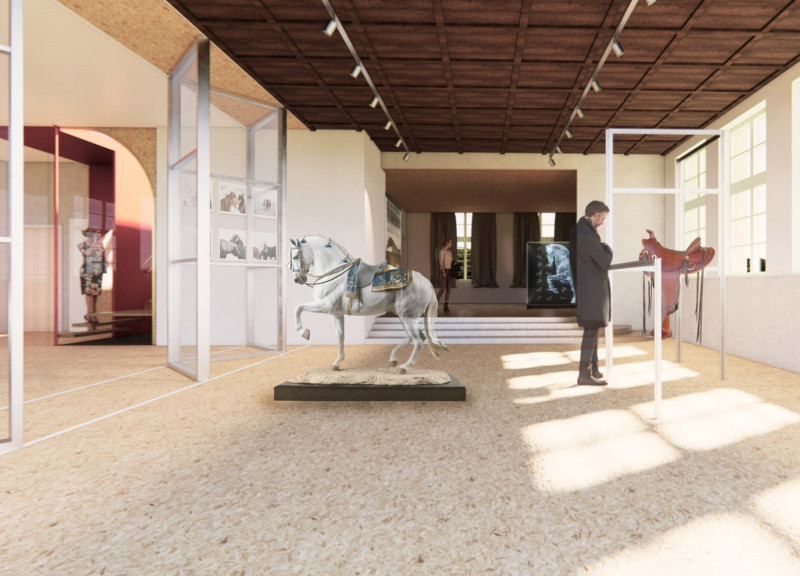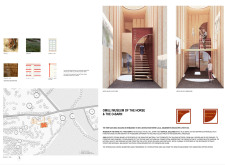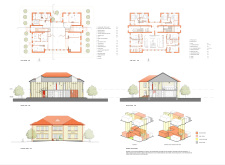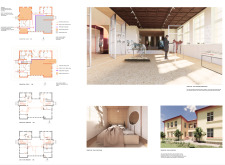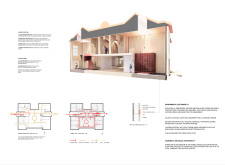5 key facts about this project
At its core, the project embodies the principles of modern architecture, prioritizing both form and function. The building serves as a multi-purpose space intended for [insert specific function, such as community gatherings, educational purposes, or commercial use]. This versatility highlights the design's responsiveness to various activities, promoting inclusivity and accessibility while creating a welcoming environment for a diverse array of users.
The architectural design features a harmonious blend of materials that not only enhance aesthetic appeal but also contribute to the overall sustainability of the structure. Integral elements include concrete, glass, wood, and steel, each selected for their unique qualities and the functional roles they play within the project. The use of concrete provides durability and resilience, while expansive glass panels invite natural light into the interior spaces, fostering a sense of openness. The incorporation of wood brings warmth to the design, contrasting with the sleekness of steel elements used in structural components and accents.
The layout thoughtfully organizes different zones within the building, ensuring a seamless flow between spaces. Public areas are strategically placed to encourage social interaction, while more private sections are designed for focused activities. The placement of large windows and open areas facilitates a strong connection with the surrounding environment, allowing occupants to experience the beauty of [insert relevant geographic features, such as mountains, valleys, or urban landscapes]. The relationship between interior and exterior spaces reinforces the project’s commitment to creating environments that are not only functional but also aesthetically pleasing.
Unique design approaches are evident throughout the project. Sustainable practices are embedded in the design philosophy, with features such as passive solar systems and rainwater harvesting integrated into the architecture. These elements work together to reduce the building's environmental footprint while promoting energy efficiency. The green roof not only insulates the structure but also contributes to biodiversity, providing habitat for various species and enhancing the overall ecological value of the site.
Another notable aspect of the design is the attention to detail in material selection and craftsmanship. Each component reflects a deliberate choice aimed at harmonizing with the environment, from the smooth finishes of the interior furnishings to the textured surfaces of the exterior facades. This careful consideration of materials and finishes creates a nuanced dialogue between the building and its context, reinforcing a sense of place and identity.
Additionally, the project addresses the importance of community dynamics. By incorporating flexible spaces that can be adapted for various uses, the design encourages engagement and interaction among users. Whether hosting events, workshops, or casual gatherings, the architecture facilitates social connections and strengthens community ties.
As you delve deeper into the project presentation, consider exploring architectural plans, sections, and design concepts that offer further insights into the innovative ideas behind this architectural endeavor. The use of spatial arrangements and materiality within this project illustrates a deliberate strategy aimed at enhancing the user experience while being attuned to the surrounding context. Each detail contributes to a cohesive narrative that underscores the significance of thoughtful architecture in today’s built environment. Engage with the specifics of this design to better understand how it encapsulates contemporary architectural trends while maintaining a clear focus on functionality and sustainability.


